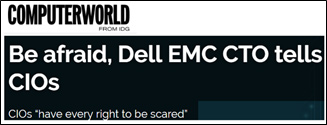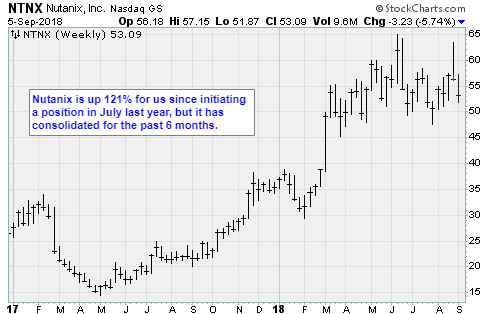The future of cloud computing is more clouds
 |
The future of information technology is not only about the cloud. Wildly convoluted architectures will require a reimagining of the way the industry solves problems.
That's what John Roese, chief technology officer at Dell EMC, says. He believes multi-tiered clouds are as inevitable as they are complex. Speaking with Computerworld, he predicted unprecedented disruption.
 |
Disruption is good. It is a huge opportunity for investors.
The idea that enterprise IT is moving to the cloud is no longer a matter of serious debate. In 2016, Gartner, a global IT research and consultant group, predicted businesses would spend $1 trillion migrating workloads to public and private clouds by 2020.
At the time, the idea was considered hyperbolic. Since then, enterprises large and small have rushed to the cloud. For good reason. It offers scale and reliability, while buttoning down costs.
Gartner created an IT budget comparison tool for enterprises in 2017. In the healthcare sector, for example, staff and support costs swallowed 75% of IT budgets. In contrast, cloud subscription models are based on usage. Costs are spread out over time, resulting is immediate savings.
Investors who recognized the transition to the cloud early have reaped huge rewards. Amazon.com (AMZN), Microsoft (MSFT), Salesforce.com (CRM), Adobe Systems (ADBE) and Workday (WDAY) built massive businesses in public and hybrid clouds, customer relationship management, digital analytics and human resources. All of these businesses involved turnkey solutions, serving human end-users.
Roese believes that era is over. The next phase of computing will involve multi-tiered clouds. End-users are more likely to be sensors and processes than people.
He uses the example of connected cars. In the future, mostly autonomous vehicles will communicate over central networks.
Cars and trucks will be capable of sharing information about road conditions, traffic and even upcoming weather conditions.
Centralized data-analytic programs will calibrate flow patterns and dictate speed.
Transportation will be safer and more efficient by orders of magnitude.
To get there, Roese envisions four distinct cloud architectures.
- The first tier would be a shared infrastructure cloud setup by car companies.
- Another tier would process real-time data collected from vehicle sensors, at the edge of the network.
- A third tier would manage the back-end operations at individual car brands.
- And a fourth tier would manage infotainment and navigation.
As futuristic as it seems, these clouds are here today.
BMW and Mercedes announced their vehicles will begin sharing information collected from cameras, radar and ultrasonic sensors. Nvidia (NVDA) is building vehicle supercomputers capable of processing mountains of real-time sensor data. Tesla (TSLA) has demonstrated the utility of over-the-air vehicle performance updates. And Apple (AAPL), Alphabet (GOOGL) and BlackBerry (BB) are all vying to win the infotainment stack.
The big opportunity for investors is simplification.
In the future, making sense of all of the disparate cloud tiers, and integrating the data to speed innovation, will be more important than ever.
The software companies building this connective tissue will sit atop the next big thing in technology.
 |
Nutanix (NTNX) is doing this now, on a smaller scale. Since 2009, the San Jose company has been building what it calls hyper-converged infrastructure. The big idea was to converge computer processing, storage, networking and virtualization in a single, full-stack solution.
Its Acropolis software operating system runs web-scale workloads like Oracle and SAP across all environments. It aims to erase the boundaries between public, private and distributed clouds.
Companies benefit because they get to pick the hardware and cloud environments that best suit their needs, while simplifying their back end with a single OS.
Running mission-critical apps in a public cloud like Amazon Web Services, while maintaining customer data inside a private data center, is a snap.
And according to IDC research, IT expenses will be reduced by 40% to 60%.
None of this has been lost on A-list companies …
eBay (EBAY), Best Buy (BBY), Activision Blizzard (AVTI) and Honda are Nutanix clients. The company signed a partnership agreement with Google Cloud in 2017. This year, managers worked out OEM deals with Lenovo and IBM (IBM).
In fiscal 2018, the company had organic sales growth 50.7% to $1.16 billion year-over-year.
The future of computing is not the cloud. It's clouds, and it is complex. Nutanix managers positioned the company to make the process simple, and that is a win for investors.
Best wishes,
Jon D. Markman
P.S. My Tech Trend Trader subscribers are sitting on a tidy 78.7% gain in Nutanix. But if you are trading options using my real-time option recommendations, you could do even better. Ordinary investors following my strategy since 2012 should have doubled their money every year on average over the past six years. My Strategic Options strategy is simple, effective and something you can start using as soon as today. Click here to see how easy it is to put to work in your own portfolio >>

